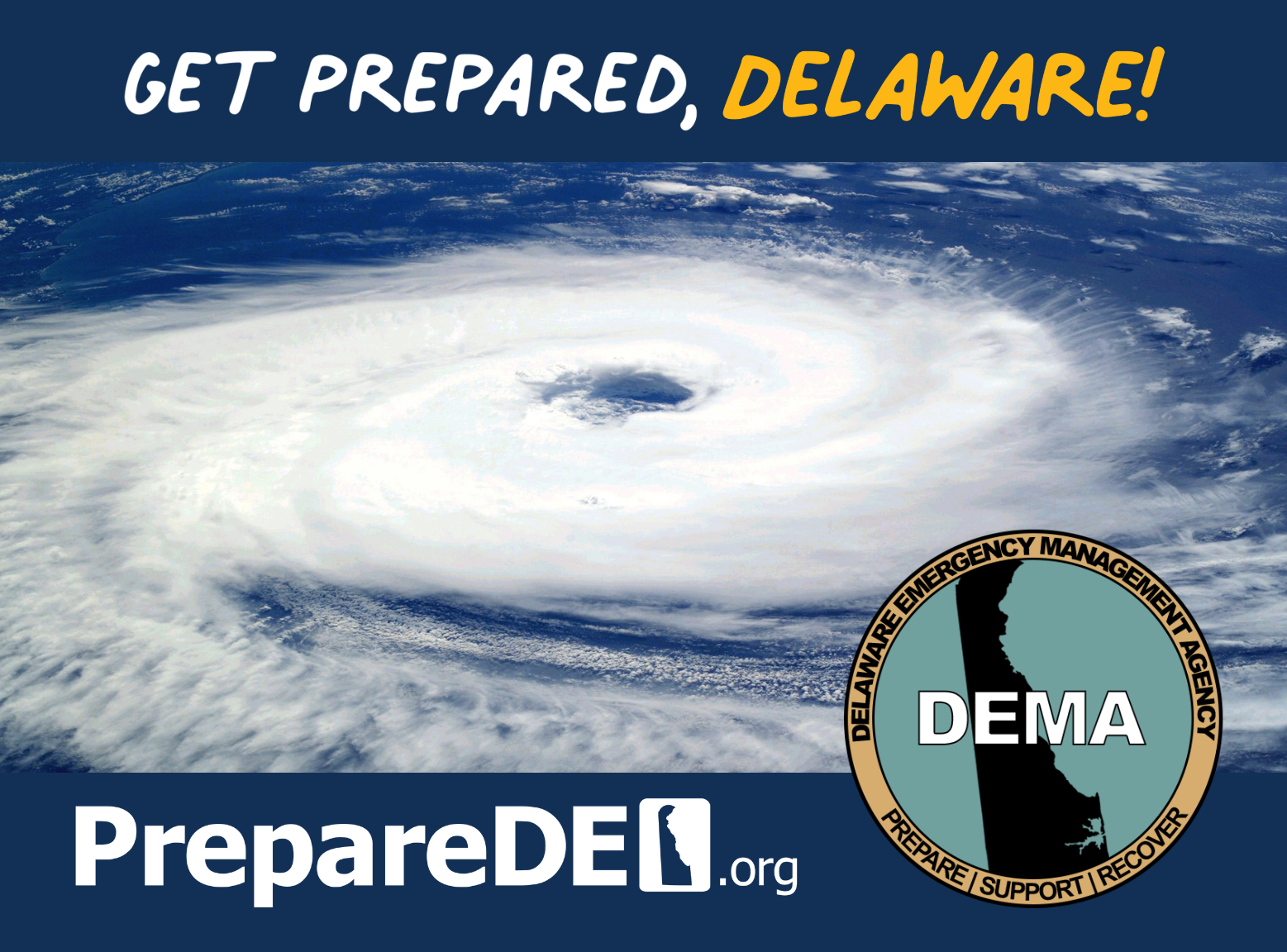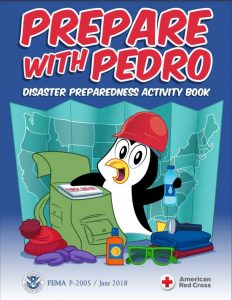Hurricane Preparedness Is No Accident
Delaware Emergency Management Agency | Department of Safety and Homeland Security | Newsroom | Date Posted: Friday, July 15, 2022
Delaware Emergency Management Agency | Department of Safety and Homeland Security | Newsroom | Date Posted: Friday, July 15, 2022

Make a plan. Make a kit. Stay informed. – PrepareDE.org
SMYRNA, Del. – “Get Prepared, Delaware!”
That’s the key message from the Delaware Emergency Management Agency (DEMA) as it offers tips and resources to help residents and visitors to get ready in case a hurricane or tropical storm impacts the First State.
The Atlantic hurricane season is June 1 to November 30. This year, the National Oceanic and Atmospheric Administration (NOAA) forecast is predicting an above-average season: 14 to 21 named storms, 6 to 10 hurricanes, and 3 to 6 major hurricanes. So far, the Atlantic Basin has had only three named storms: Alex, Bonnie, and Colin. However the potential risk is still very real.
Delaware does not need to have a direct hit from a hurricane to experience the most disastrous effects of a major weather event: storm surge and severe coastal flooding, high winds, inland flooding, tornadoes, large waves, and rip currents. Delaware’s average elevation is only 60 feet above sea level, but most of the state south of the C & D Canal is lower. The state’s unique location on the Delmarva Peninsula – surrounded by water on three sides – makes it vulnerable to storm surge on top of high tides.
Recent history shows even the remnants of a hurricane or tropical storm can pack a powerful punch. In August 2020, Tropical Storm Isaias spawned a record-breaking 29.2-mile tornado with maximum winds up to 105 mph that wreaked a devastating path of destruction from Dover to Middletown. One woman in Milford was killed by a falling tree after the storm. And in September 2021, historic amounts of rainfall from Tropical Depression Ida caused record flooding in the Brandywine Creek in and around the City of Wilmington, causing millions in catastrophic property damage that resulted in a federal disaster declaration for New Castle County.
Experts agree the best time to prepare is now, before a storm, and there are many county, state, and federal resources to help residents get ready.
Here are the key recommendations from DEMA as it urges residents to prepare for a potential hurricane:
 Make a Plan.
Make a Plan.Emergency kit for your home and for your vehicle:
First-aid kit:
Pet supplies kit:
Social Media: Follow Delaware Emergency Management Agency on Facebook and Twitter and Instagram
The Federal Emergency Management Administration (FEMA) also has resources to help you prepare: ready.gov/hurricanes
Contact:
John Petersen, Delaware Emergency Management Agency
302-659-2211 (office) 302-233-8180 (cell)
Email: john.petersen@delaware.gov
####
Keep up to date by receiving a daily digest email, around noon, of current news release posts from state agencies on news.delaware.gov.
Here you can subscribe to future news updates.
Delaware Emergency Management Agency | Department of Safety and Homeland Security | Newsroom | Date Posted: Friday, July 15, 2022

Make a plan. Make a kit. Stay informed. – PrepareDE.org
SMYRNA, Del. – “Get Prepared, Delaware!”
That’s the key message from the Delaware Emergency Management Agency (DEMA) as it offers tips and resources to help residents and visitors to get ready in case a hurricane or tropical storm impacts the First State.
The Atlantic hurricane season is June 1 to November 30. This year, the National Oceanic and Atmospheric Administration (NOAA) forecast is predicting an above-average season: 14 to 21 named storms, 6 to 10 hurricanes, and 3 to 6 major hurricanes. So far, the Atlantic Basin has had only three named storms: Alex, Bonnie, and Colin. However the potential risk is still very real.
Delaware does not need to have a direct hit from a hurricane to experience the most disastrous effects of a major weather event: storm surge and severe coastal flooding, high winds, inland flooding, tornadoes, large waves, and rip currents. Delaware’s average elevation is only 60 feet above sea level, but most of the state south of the C & D Canal is lower. The state’s unique location on the Delmarva Peninsula – surrounded by water on three sides – makes it vulnerable to storm surge on top of high tides.
Recent history shows even the remnants of a hurricane or tropical storm can pack a powerful punch. In August 2020, Tropical Storm Isaias spawned a record-breaking 29.2-mile tornado with maximum winds up to 105 mph that wreaked a devastating path of destruction from Dover to Middletown. One woman in Milford was killed by a falling tree after the storm. And in September 2021, historic amounts of rainfall from Tropical Depression Ida caused record flooding in the Brandywine Creek in and around the City of Wilmington, causing millions in catastrophic property damage that resulted in a federal disaster declaration for New Castle County.
Experts agree the best time to prepare is now, before a storm, and there are many county, state, and federal resources to help residents get ready.
Here are the key recommendations from DEMA as it urges residents to prepare for a potential hurricane:
 Make a Plan.
Make a Plan.Emergency kit for your home and for your vehicle:
First-aid kit:
Pet supplies kit:
Social Media: Follow Delaware Emergency Management Agency on Facebook and Twitter and Instagram
The Federal Emergency Management Administration (FEMA) also has resources to help you prepare: ready.gov/hurricanes
Contact:
John Petersen, Delaware Emergency Management Agency
302-659-2211 (office) 302-233-8180 (cell)
Email: john.petersen@delaware.gov
####
Keep up to date by receiving a daily digest email, around noon, of current news release posts from state agencies on news.delaware.gov.
Here you can subscribe to future news updates.